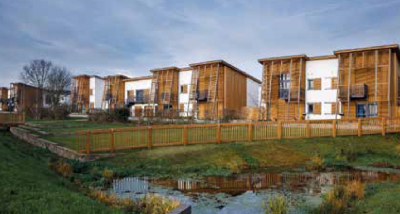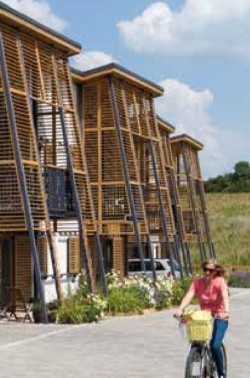Notwithstanding the obvious concerns of Brexit and the clear signals that parts of the housing market are stalling, we should remain confident that there is plenty of steam left to see an uptick in residential activity, buoyed by council housebuilding and the booming Build to Rent (B2R) sector. These both generating broad support for greater use of modular, panelised and other techniques to increase productivity and quality.
The National Planning Policy Framework (NPPF) cleared several historical planning barriers out of the way and recent surveys are suggesting the average time awaiting consents are falling, the planning system is no longer a default barrier to delivery. With this new political and policy energy comes some very clear messages, however, and ones that the modular and offsite sector should listen to carefully.

The NPPF takes as its core principle that local people should form local plans regarding the location and form of housing in their areas. Moreover, the framework encourages a more diverse number of models to deliver homes, prompting new entrants to get stuck in. Most significantly for all developers it also embraces the issue of design quality, further reinforced in the July 2018 revision requiring projects to seek and secure high-quality outcomes. The revised framework will enable councils to refuse planning permission for any development that does not prioritise design quality or adequately complement its surroundings. It will also encourage councils to adopt new visual tools to promote better design and quality.
Secretary of State for Communities, James Brokenshire said: "This revised planning framework sets out our vision of a planning system that delivers the homes we need. I am clear that quantity must never compromise the quality of what is built, and this is reflected in the new rules."
This edict was further reinforced by recent pronouncements from Kit Malthouse - the 'most recent' Housing Minister - that the huge demand for housing should not give licence to poor design. This is directly informing public procurement throughout the country, including the increasingly ambitious land activities of Homes England. Their recent soft market test for an eight-site MMC Pilot in September 2018 will potentially inform the largest government initiative yet to promote offsite delivery, with a programme of up to 5000 homes.
Moreover, as we look to increase densities, design excellence has become the planners' default for accessing projects that seek to go beyond the norms of density comfort. We all agree that great design is important but the arbitration of what good looks like is a giant stylistic football that can become a barrier in itself.
For the public, the reassuring 'iconography' or roofs, front doors, brick formula with streets and gardens are easy enough to recognise, but many of the projects criticised by ministers and the design community easily reach this low bar. Moreover, housebuilders are able to deliver such homes more cheaply using traditional supply chains and often fast enough for the market to absorb, with the flexibility to stop production immediately the market turns.
Early entrants to the offsite delivery of low-rise housing have largely sought to focus on the low end of housebuilder standard product, aiming to replicate the 'roof, front door, brick' combo. While this is understandable as they get to grips with the key manufacturing aspects of chassis production, transportation and installation, they will need to progress quickly to higher levels of design aspiration to avoid the dreaded 'prefab' tag. Missed expectations on quality will quickly be found out, as will limitations to fenestration, space standards and elevational proportions.
Architects who specialise in residential design will work hard to create layouts that optimise light, view and aspect as well as creating compositions of individual home design that make great places, build communities with homes of character. Issues of privacy, security and safety are balanced with how each home is occupied and also how it might change over time as well as is
For example, working with Barratt at Hanham Hall in Bristol, HTA
It is important to embrace the new disciplines required to create homes using emerging offsite systems. Technical excellence is not enough, the need to embrace expertise in great housing design is paramount. At HTA we use the term 'designers in the industry', with over 80 staff involved in our modular and offsite projects. As residential design specialists, with two decades of experience on offsite delivery, we also understand that our teams need a modular and offsite mindset to get the best out of the systems we collaborate with.
There is much to look forward to and some extremely good prospective projects to demonstrate to ministers and public alike that the beautiful homes of lasting quality required by the NPPF has truly arrived and can be delivered from factories. For more information visit: www.hta.co.uk









